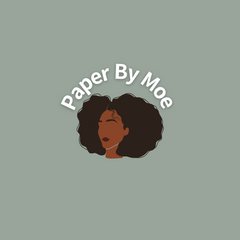Imagine sitting down with your future-self’s paycheck, your ideal expenses penciled in, your savings target visible, and your debt plan clear. Now imagine this isn’t a dream—it’s your Week 3 of the Last Quarter Challenge.
This week we’re not just budgeting by default. We’re writing and visualizing the budget you want to have—so you can start becoming the person who lives by it.
🧠 The Science: Why Writing & Visualizing Work
Writing boosts goal achievement
Research shows that physically writing down your goals doesn’t just put them on paper—it activates cognitive processes that make you more likely to follow through. One study found that people who wrote down their goals were about 42 % more likely to accomplish them compared to those who didn’t.
Writing your ideal budget serves multiple purposes:
-
It clarifies what you want your income, savings, expenses and debt payments to be.
-
It forces you to see the numbers in black and white—no guesswork.
-
It creates accountability and a physical reminder of your monetary goals.
Visualizing builds focus and motivation
Beyond writing, visualization helps you “see” your budget, your goals, and your future clearly. According to cognitive-psychology research, from Psychology Today, when you visualize success, you prime your brain to find opportunities and stay focused.
When you combine writing with visualization you get a powerful combo: you know your numbers (because you wrote them), and you feel them (because you mentally rehearse them). Together they make your ideal budget not just a plan, but a lived possibility.
📅 Week 3 of the Last Quarter Challenge — Write Your Ideal October Budget
What you’ll do this week:
-
Review what you wrote in Week 1 (your real spending/expenses) and Week 2 (your test goals for 2026).
-
Write out your ideal October budget—that means:
-
How much you want to bring in (income)
-
How much you expect to spend on expenses (fixed + variable)
-
How much you’ll allocate to savings and debt payoff
-
-
Visualize living that budget: picture the paycheck hitting, you distributing into categories, your savings growing, your debt shrinking.
-
Use your workbook’s “October” section (part of the Last Quarter Challenge) to record your ideal budget, compare it to real numbers, and reflect on what to adjust.
The goal: by the end of this month you’re not guessing your budget—you’re owning it.
🎯 Why This Week Matters
-
Precision over guesswork: Instead of setting vague targets, you’ll have concrete numbers you wrote yourself.
-
Momentum: You’ve already done the work—Week 1 captured reality, Week 2 defined possibilities, and Week 3 builds the bridge between them.
-
Confidence: Writing and visualizing makes your budgeting feel real. You won’t just hope for change—you’ll see it mapped out.
-
Testing ground: October becomes your “dress rehearsal” for 2026—use it to fine-tune what works before the new year hits.
🛠 How to Do It (Step-by-Step)
-
Grab a quiet hour this week with your challenge workbook or notebook.
-
Write down your ideal income for October—what you aim to bring in if things go well.
-
List your fixed expenses (rent/mortgage, utilities, insurance) and variable expenses (groceries, gas, entertainment).
-
Write down your savings target and debt payment goal for the month.
-
Visualize your budget execution:
-
You receive your paycheck.
-
You move money into savings, debt, and categories.
-
You live within your plan.
-
-
In your workbook, compare your ideal numbers vs. your real budget from Week 1 and Week 2. Note any gaps or surprises.
-
Reflect: What worked? What needs adjusting? Prepare for next week.
🛒 Want the Tools to Make It Easier?
If you haven’t yet, the Last Quarter Challenge provides:
✔️ Guided worksheets for October, November, and December
✔️ Monthly sections for your ideal budget, reflections, and adjustments
✔️ Printables and prompts to make writing & visualizing your budget intuitive
✔️ A community and mindset that keeps you focused through the end of the year
Head over to PaperByMoe.com and get your copy today—let’s finish the year strong and step into 2026 with clarity.
✨ Final Thought
Writing out your ideal budget and visualizing it isn’t just one more task—it’s the act of designing your financial life. When your budget is written, seen, felt, and practiced, you don’t wait for change—you become the change you want.
Step into Week 3 of the challenge with purpose. Write it. Visualize it. Live it.
Because an intentional October budget lays the foundation for an intentional 2026.
